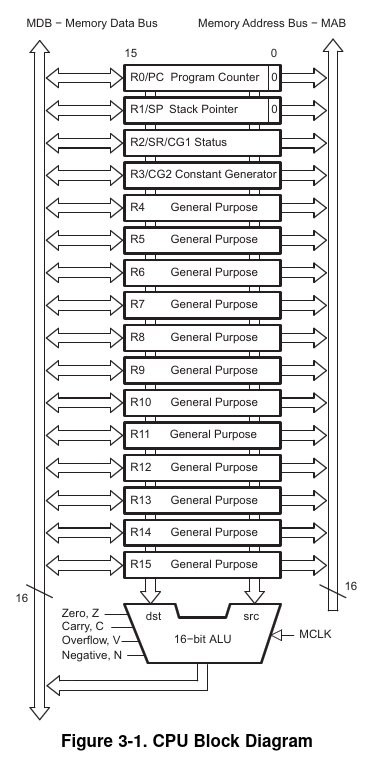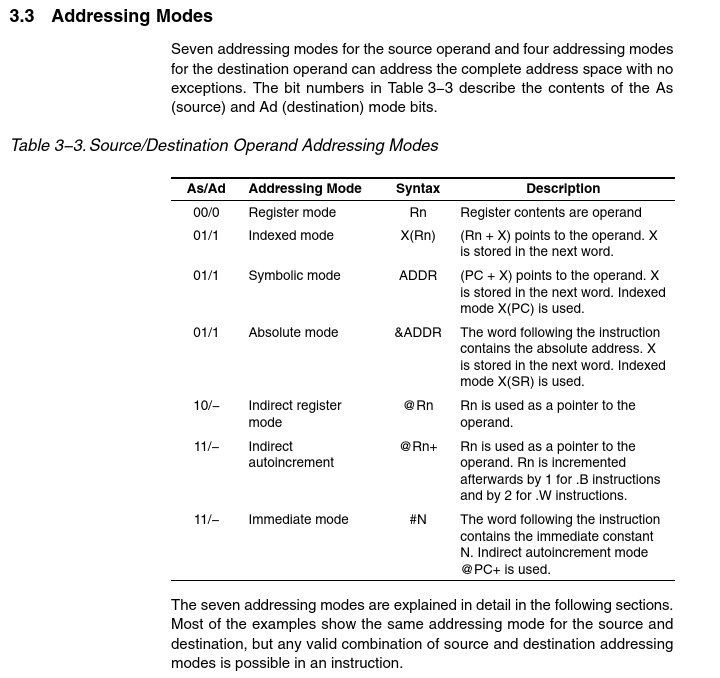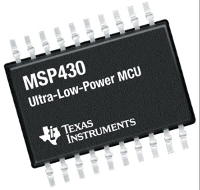Why Use MSP430 ?¶
The Texas Instruments MSP430 family of ultra-low-power microcontrollers consists of several devices featuring different sets of peripherals targeted for various applications. The architecture, combined with five low-power modes, is optimized to achieve extended battery life in portable measurement applications. The device features a powerful 16-bit RISC CPU, 16-bit registers, and constant generators that contribute to maximum code efficiency. The digitally controlled oscillator (DCO) allows wake-up from low-power modes to active mode in less than 1 µs.
Register Rich CPU¶
Look at these resources!


PRICING/Availability¶
The MSP430G2201IRSA16R Target used in this article cost: It started at $0.40 AUD in August 2021, but as you can see the prices have been steadily increasing throughout the ‘Great Chip Shortage’. Clearly waiting for prices to ‘come down’ is a poor strategy at the moment.
Arrow.com MSP430G2201IRSA16R info¶
Price Ea $AUD |
QTY |
DATE |
Stock Level |
|---|---|---|---|
0.40 |
100+ |
6/9/2021 |
2000 |
1.3933 |
100+ |
3/01/2022 |
500 |
1.4940 |
100+ |
2/02/2022 |
500 |
- On the 5th Jan 2022, arrow.com had 301 models of MSP430 in stock, with one model at 78,000 units!
- Total STM32F0 in stock at arrow.com on the same day was one (1).
Benefits¶
MSP430 is 16 bits, and has the nicest Assembly one could ask for
MSP430 have tightly integrated peripherals, unlike cortex-m where low power modes take a month to learn, MSP430 is a single command to achieve low power
MSP430 also comes in DIP packages, which hobbyists love
MSP430 is very low power, probably among the lowest of the low. See this ultra low power example.
MSP430 uses a robust flashing mechanism, fast and flawless, unlike SWD which I think isn’t as robust
MSP430 have been available throughout the “great chip shortage of 2020 - ?”
Cheap; I bought my MSP430G2201IRSA16R Target units (2KB flash) for $0.40 each, including shipping in September 2021
Downsides¶
I’m not a fan of the Ti documentation, I feel it is far too ‘wordy’ and attempts too much ‘hand holding’. Perhaps I have become too used to the STM32 documents terseness.
MSP430 can be more expensive than STM32Fxx for the same number of peripherals.
The cheaper MCUs don’t have much Flash, typically 512 to 2KB, so it will never host a on-chip-Forth because they need at least 11KB just for the binary Forth image.
MSP430’s with up to 512KB Flash are available to buy right now, but they are considered expensive compared to STM32 … when you could get STM32 !
